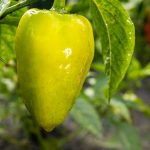Are you interested in the economics of home vegetable gardening? The trend of growing your own produce at home has been steadily increasing in recent years, driven by a desire for sustainable living, self-sufficiency, and cost savings. This article will explore the various aspects of the economics of home vegetable gardening, from start-up costs to long-term savings, as well as the environmental and health benefits associated with it.
Home vegetable gardening offers numerous benefits, including saving money on groceries and improving food security. By growing your own fruits and vegetables, you can significantly reduce your grocery expenses while ensuring a constant supply of fresh produce. This not only contributes to financial savings but also enhances food security by reducing reliance on external sources.
In this article, we will delve into the cost analysis of home vegetable gardening, examining both the start-up expenses involved in setting up a garden and the long-term savings that can be achieved through homegrown produce. Additionally, we will explore the economic aspects of seed-saving and composting for home vegetable gardens, providing insights into sustainable practices that contribute to overall cost reduction.
The Benefits of Home Vegetable Gardening
Home vegetable gardening offers a wide range of benefits, including significant cost savings on groceries and improved food security for individuals and families. With the rising prices of fresh produce and the increasing concern over food supply chains, many people are turning to home gardening as a way to take control of their food sources while also saving money.
The economics of home vegetable gardening can be quite favorable, particularly when considering the initial start-up expenses and long-term savings.
According to the National Gardening Association, the average cost to start a home vegetable garden is around $70, which includes buying seeds, tools, and other necessary materials. However, the potential annual savings on groceries from a well-maintained garden can amount to several hundred dollars. In fact, a study conducted by the University of Arizona Cooperative Extension found that a properly managed 600-square-foot garden could yield up to $600 worth of produce annually.
Furthermore, many proponents of home vegetable gardening emphasize the importance of seed-saving and composting as economic strategies for sustainable gardening. By saving seeds from one season’s harvest to plant in the next growing season, gardeners can reduce their overall seed expenses while also preserving heirloom varieties. Composting kitchen scraps and garden waste not only enriches soil but also reduces the need for store-bought fertilizers, contributing to long-term cost savings and environmental sustainability.
| Home Vegetable Garden Expense | Amount |
|---|---|
| Start-up Cost | $70 |
| Potential Annual Savings on Groceries | $600 |
Cost Analysis of Home Vegetable Gardening
Home vegetable gardening offers numerous benefits, including the opportunity to save money on groceries and improve food security. However, before diving into this endeavor, it’s important to conduct a cost analysis to understand the economics of home vegetable gardening. This includes evaluating start-up expenses and projecting long-term savings.
Start-up expenses for home vegetable gardening can include the cost of seeds or starter plants, soil amendments, gardening tools, containers or raised beds, and irrigation systems. These initial investments can vary depending on the size of the garden and the resources already available. To manage start-up expenses, consider creating a budget and prioritizing essential items. Additionally, explore options for acquiring second-hand tools or repurposing materials for gardening to minimize costs.
While there are initial costs associated with home vegetable gardening, it’s important to recognize the potential for long-term savings. By growing your own produce, you can significantly reduce your grocery bills and have a sustainable source of fresh fruits and vegetables.
Moreover, investing in seed-saving practices can contribute to long-term savings by eliminating the need to purchase new seeds each season. Furthermore, composting organic waste from your kitchen and garden can reduce the need for store-bought fertilizers, which is another aspect of understanding the economics of home vegetable gardening.
Understanding the Economics of Seed-Saving and Composting for Home Vegetable Gardens
Home vegetable gardening offers numerous benefits, including the ability to save money on groceries and improve food security. An important aspect of the economics of home vegetable gardening is understanding the value of seed-saving and composting.
By saving seeds from your own vegetables, you can reduce the need to purchase new seeds each season, ultimately cutting down on expenses. Additionally, composting kitchen scraps and garden waste provides a free source of nutrient-rich soil amendment for your garden, eliminating the need to purchase chemical fertilizers.
According to a study by the National Gardening Association, a well-maintained vegetable garden can yield an average return of $500 on a $70 investment in seeds and fertilizer. When you factor in the savings from seed-saving and composting, this return on investment becomes even more significant.
For example, a packet of tomato seeds costs around $3-$4, but a single ripe tomato from the store can cost just as much. By saving seeds from your own tomatoes, you eliminate this recurring expense.
In addition to the financial benefits, seed-saving and composting also contribute to environmental sustainability. By reducing the amount of waste sent to landfills and avoiding the purchase of commercial fertilizers, home gardeners can minimize their carbon footprint.
This aligns with the broader trend towards sustainable living and environmentally friendly practices. As such, it is clear that understanding the economics of seed-saving and composting is essential for those looking to maximize the financial and environmental benefits of home vegetable gardening.
| Aspect | Value |
|---|---|
| Return on Investment for Vegetable Garden | $500 on a $70 investment in seeds and fertilizer |
| Average Cost of Tomato Seeds | $3-$4 per packet |
Exploring the Environmental Impact of Home Vegetable Gardening
Home vegetable gardening not only offers personal and economic advantages but also has a significant impact on the environment. By growing your own produce at home, you can reduce the distance that food travels from farm to table, which in turn reduces carbon emissions associated with transportation.
This aspect of home vegetable gardening is known as “food miles” – the distance food travels from where it is grown to where it is ultimately consumed. By cutting down on food miles, you can help minimize the environmental impact of your food consumption.
Furthermore, homegrown vegetables often require minimal or no packaging, as compared to store-bought produce that is typically wrapped in plastic or other materials. This reduction in packaging waste contributes positively to environmental sustainability by reducing the amount of non-biodegradable material that ends up in landfills. In addition, reducing packaging helps decrease overall waste production and limits the demand for resources used in manufacturing packaging materials.
When considering the economics of home vegetable gardening, it’s important to acknowledge the environmental benefits as well. Not only does this practice offer financial savings and food security, but it also aligns with sustainable living practices by reducing food miles and cutting down on packaging waste. As more individuals embrace home vegetable gardening, these environmentally-friendly impacts continue to grow, making a positive contribution towards ecological preservation and resource conservation.
Maximizing Space and Resources
When it comes to home vegetable gardening, space and resource management are crucial factors, especially for those with limited outdoor space or budget constraints. In this section, we will explore various tips and strategies for maximizing resources and making the most of small-scale economical gardening.
Container Gardening
One effective way to maximize space is through container gardening. Whether it’s a balcony, patio, or even just a small corner of your yard, utilizing containers such as pots, hanging baskets, or grow bags can significantly expand your gardening area. This not only allows for flexibility in placement but also enables better control over soil quality and water drainage.
Vertical Gardening
Another space-saving technique to consider is vertical gardening. By growing plants vertically on trellises, fences, or walls, you can make efficient use of vertical space while still providing ample room for plants to thrive. This method is particularly beneficial for vining crops such as tomatoes, cucumbers, and peas.
Companion Planting
Incorporating companion planting techniques can also optimize resources in your garden. By strategically pairing compatible plant species that benefit each other’s growth and pest control, you can maximize yield and minimize the need for chemical pesticides or fertilizers.
By applying these tips for small-scale economical gardening, individuals can effectively manage their resources and make the most of their available space to produce fresh and cost-effective vegetables at home. With a focus on efficient resource utilization and strategic planning, small-scale gardens can yield significant savings while promoting sustainability and self-sufficiency in food production.
The Health and Wellness Benefits of Home Vegetable Gardening
Home vegetable gardening not only brings economic benefits but also has a positive impact on health and wellness. By growing your own produce at home, you have access to fresh, nutrient-dense fruits and vegetables that are not only more affordable but also healthier than store-bought options. Here are some key points to consider when calculating the value of fresh, nutrient-dense produce from your home garden:
- Nutritional Value: Homegrown fruits and vegetables are often richer in nutrients compared to those found in grocery stores. By consuming freshly harvested produce, you can ensure that you and your family are getting the maximum nutritional benefits from your food.
- Cost Savings on Health Expenses: Consuming a diet rich in fresh fruits and vegetables can lead to long-term health benefits, potentially reducing medical expenses related to preventable illnesses. This is an important factor to consider when evaluating the economics of home vegetable gardening.
- Emotional Well-being: Engaging in activities such as gardening has been linked to improved mental health and reduced stress levels. The act of tending to a garden can be therapeutic while the satisfaction of nurturing plants from seedling to harvest can contribute positively to overall well-being.
In addition to the economic advantages, it’s important to consider the holistic benefits of cultivating a home vegetable garden. The ability to provide your family with fresh, nutrient-dense produce contributes significantly to their health and well-being. By taking into account a broader set of factors beyond just financial savings, you can fully appreciate the value that home vegetable gardening brings.
Case Studies
Case Study 1: The Smith Family
The Smith family, living in a suburban neighborhood, decided to start a home vegetable garden as a way to save money on groceries and provide their family with fresh, organic produce. They initially invested in raised beds, soil, seeds, and basic gardening tools as their start-up expenses.
Over the first year, they estimated that they saved approximately $500 on their grocery bill by growing their own vegetables. Their long-term savings continued to grow as they implemented seed-saving techniques and composting, further reducing their need to purchase new seeds and fertilizers each season.
Case Study 2: Urban Gardening in Apartment Living
In a bustling city where space is limited, the Lopez family started an economical home vegetable garden on their apartment balcony. By utilizing vertical gardening techniques and small containers, they were able to grow an impressive variety of vegetables in a small space. Through careful planning and resourcefulness, they found that the cost of maintaining their vegetable garden was minimal compared to the savings they accrued from not having to purchase many grocery items like tomatoes, peppers, and herbs.
Case Study 3: Community-Supported Gardens
A group of neighbors came together to create a shared community garden in a vacant lot in their neighborhood. By pooling resources and labor, they were able to establish a large-scale vegetable garden that provided fresh produce for all participating households. Through cost-sharing of initial expenses and regular maintenance tasks like watering and weeding, each member saved significant amounts of money on grocery bills throughout the growing season.
These case studies highlight the various ways in which individuals and communities have successfully implemented economical home vegetable gardening techniques to save money on groceries while enjoying fresh, nutrient-dense produce. By understanding the economics of home vegetable gardening and implementing cost-saving measures such as seed-saving, composting, and maximizing space efficiency, these real-life examples demonstrate how anyone can benefit from this sustainable practice.
Conclusion
In conclusion, home vegetable gardening offers a myriad of economic and personal benefits that make it an attractive option for many individuals and families. As explored in this article, the economics of home vegetable gardening can lead to significant savings on grocery expenses, ultimately improving food security for households.
The initial start-up costs of a home vegetable garden may require some investment, however, the long-term savings on purchasing fresh produce can result in a positive return on investment. Additionally, the practice of seed-saving and composting can further enhance the economic viability of home vegetable gardening by reducing the need to purchase seeds and fertilizers.
Furthermore, home vegetable gardening also has a positive environmental impact, as it reduces food miles and cuts down on packaging waste associated with store-bought produce. This not only benefits the environment but also aligns with sustainable living practices. Moreover, small-scale economical gardening techniques allow individuals with limited space and resources to still partake in home vegetable gardening and reap its economic benefits.
Lastly, beyond the economic advantages, home vegetable gardening has numerous personal benefits such as improved health and wellness derived from consuming fresh, nutrient-dense produce. The satisfaction of growing one’s own food can also contribute to mental well-being. In light of these advantages, embracing the economics of home vegetable gardening not only makes sense financially but also contributes to a healthier lifestyle and sustainable living practices.
Frequently Asked Questions
Is Gardening Worth It Financially?
Gardening can be financially worth it, depending on the resources and time invested. Growing your own produce can save money in the long run, as store-bought vegetables can add up over time.
What Is the Most Economical Vegetable to Grow?
Some of the most economical vegetables to grow include tomatoes, lettuce, and green beans. These vegetables are relatively easy to grow and can yield a bountiful harvest for the effort and resources put in.
Is It Really Cheaper to Grow Your Own Vegetables?
It can be cheaper to grow your own vegetables compared to buying them from the store. While there are initial costs for seeds, soil, and equipment, the ongoing savings from homegrown produce can outweigh these expenses. Plus, there’s the added benefit of knowing exactly where your food comes from.

If you’re looking to get into vegetable gardening, or are just looking for some tips on how to make your current garden better, then you’ve come to the right place! My name is Ethel and I have been gardening for years. In this blog, I’m going to share with you some of my best tips on how to create a successful vegetable garden.





